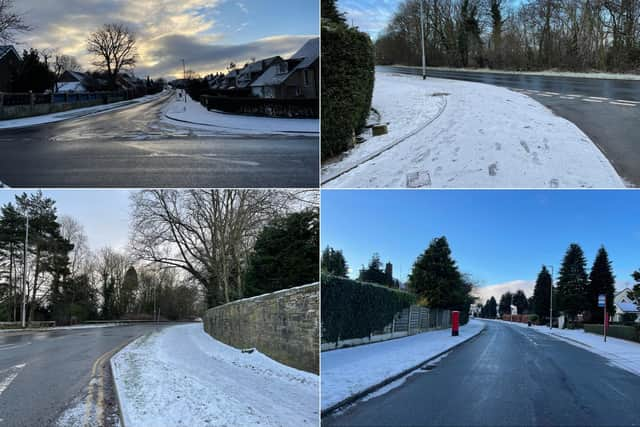First pictures as Leeds is blanketed in more snow - what is the forecast and will there be more?
and live on Freeview channel 276
Leeds woke up to another light blanket of snow this morning after it fell overnight.
The snowfall has already begun again this morning with signs of more settling in North Leeds areas including Alwoodley, Shadwell and Cookridge, and in Burley.
Advertisement
Hide AdAdvertisement
Hide AdMore light snow is forecast in Leeds throughout the course of the afternoon and evening.


It comes after snow fell across the city yesterday as well.
Temperatures have already begun to plummet below freezing, and the Met Office has issued another yellow weather warning for snow which is in place until 11:59pm on Wednesday night.
It has also said that there is a small chance of longer travel delays in place with some stranded vehicles and passengers.
The Met Office also warned that there could be some injuries from slips and falls on icy surfaces, with there likely to be some icy patches on some untreated roads, pavements and cycle paths.
Advertisement
Hide AdAdvertisement
Hide AdThere is a small chance that power cuts will occur and other services, such as mobile phone coverage, may be affected.
The Met Office forecast in full for Yorkshire and the Humber:
Tuesday: Snow showers continuing, with some brightness between showers. Further accumulations of snow may lead to some disruption, with drifting snow. Icy stretches will persist on untreated surfaces with a bitterly cold easterly wind, which will be strong near coasts. Maximum temperature 1 °C.
Tuesday night: Snow and possible hail showers will continue to affect most areas overnight, with some brief clear spells. It will feel bitterly cold in the brisk winds with a hard frost. Minimum temperature -4 °C.
Advertisement
Hide AdAdvertisement
Hide AdWednesday: Snow showers continuing through Wednesday probably turning lighter and less frequent inland by evening, with some bright or sunny spells. Northeasterly winds will be a little less strong. Very cold. Maximum temperature 1 °C.
Outlook for Thursday to Saturday: Drier and brighter during Thursday with light winds, Strong southeasterly winds developing for Friday and Saturday with a chance of snow showers - mainly near coasts. Staying very cold.
How to drive safely in snow
- Slow down
Snow, ice and water on the road reduce grip and, coupled with poor visibility in bad weather, they mean it’s essential that you cut your speed.
Stopping distances can be 10 times greater in snow and ice so slowing down gives you more time to react to other traffic or hazards on the road ahead.
Advertisement
Hide AdAdvertisement
Hide AdHowever, be careful that you don’t drive so slowly that you risk losing momentum. On snow-covered roads and especially on hills this could see you stuck and struggling to get moving again.
- Keep it smooth
As well as keeping your speed down you need to keep your inputs smooth. Sharp acceleration, braking or steering are more likely to cause your car to lose grip, leaving you with no control.
Where you can, try to use engine braking to slow down, that way you’re less likely to skid.
- Leave more space
With stopping distances seriously increased by slippy conditions it’s vital you leave more space between your car and the vehicle in front.
Advertisement
Hide AdAdvertisement
Hide AdIt’s also important to try and anticipate what other drivers are doing - being properly aware could save you from a crash or being stranded as others grind to a halt. It also means you're less likely to have to brake or steer suddenly.
- Use a high gear
If your car is struggling to find grip, especially when pulling away, try selecting a higher gear. This should reduce the amount of wheelspin and help you get moving.
- Stay seen
With shorter days and the prospect of rain, fog or snow making visibility worse, it's important to make sure you can see and be seen. Check all your lights work and are clear of snow or ice before setting off.
Don't wait until it's pitch black to use your headlights and don't just rely on running lights when conditions deteriorate. If it's snowing heavily, dipped beams may actually work better than full beams.